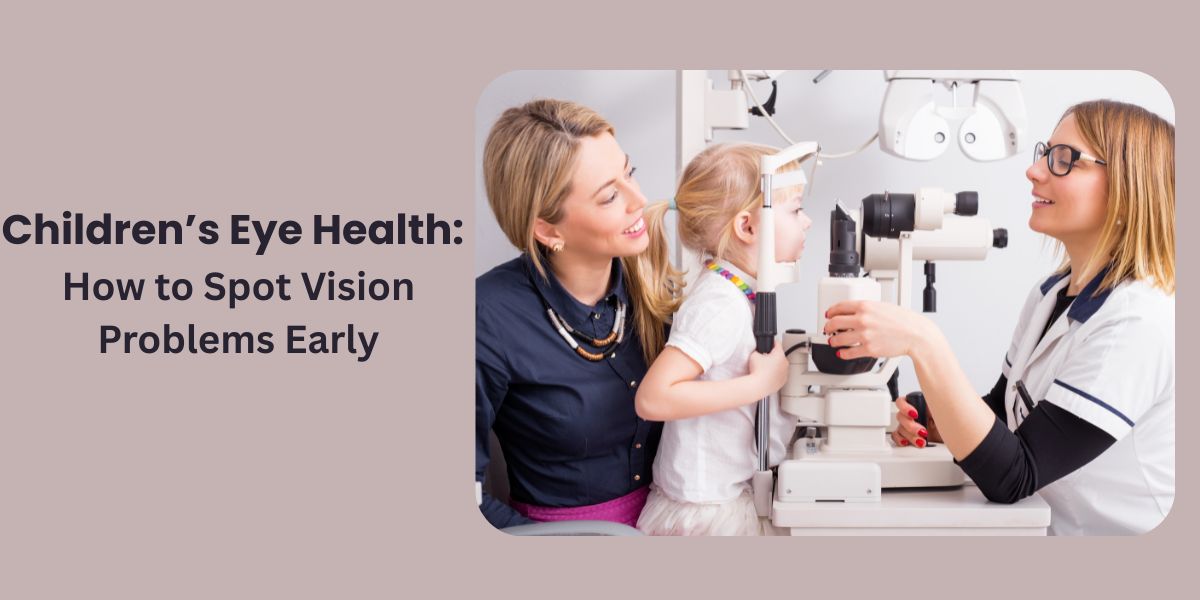Good vision plays a crucial role in a child’s overall development—from learning in school to participating in sports and building confidence. However, children often don’t realize they have vision problems. Since they assume everyone sees the world the way they do, their visual challenges can go unnoticed. This is why early detection of eye issues is essential for their long-term eye health and quality of life. Dr. Vasundhara Kulkarni, a trusted eye doctor in Moshi at Iris Eye Care, emphasizes the importance of regular eye checkups for children to help identify vision problems before they affect daily life.
Why Early Eye Exams Are Important
Many vision problems begin at an early age, sometimes even at birth. Conditions like amblyopia (lazy eye), strabismus (crossed eyes), and refractive errors such as nearsightedness or farsightedness can impact a child’s visual development if not addressed in time.
The American Optometric Association recommends that children have their first comprehensive eye exam at 6 months of age, another at age 3, and again before entering first grade. Regular checkups help ensure that the eyes are developing properly and that any issues are identified and treated early.
Signs Your Child May Have Vision Problems
Children may not always be able to communicate their visual struggles. However, there are several signs that parents and teachers can look out for:
1. Squinting or Covering One Eye
If your child squints often, it may indicate a refractive error. Covering one eye while watching TV or reading could signal a vision imbalance between the eyes.
2. Sitting Too Close to Screens
Sitting very close to the television or holding a book too near could suggest nearsightedness. Children with this condition struggle to see objects clearly at a distance.
3. Frequent Headaches or Eye Rubbing
Regular headaches, especially after school or reading sessions, may be linked to uncorrected vision issues. Constant eye rubbing can also indicate eye fatigue or dryness.
4. Poor Academic Performance
If your child is struggling in school, the root cause could be undiagnosed vision problems. Reading difficulties, skipping lines, or losing place on the page are often overlooked signs of visual challenges.
5. Misaligned Eyes or Unusual Eye Movements
If one eye appears to drift or move differently from the other, it could be a sign of strabismus. Early diagnosis and treatment are vital to prevent long-term complications.
6. Tilting the Head or Difficulty in Coordination
Tilting the head to one side while focusing or facing trouble with hand-eye coordination during activities may also suggest vision trouble.
Common Childhood Eye Conditions
Understanding the types of eye conditions that can affect children will help you stay vigilant:
Refractive Errors: Includes myopia (nearsightedness), hyperopia (farsightedness), and astigmatism. These are usually corrected with glasses.
Amblyopia (Lazy Eye): One eye has weaker vision than the other. If left untreated, it can lead to permanent vision loss.
Strabismus (Crossed Eyes): Misalignment of the eyes. Can be treated with glasses, eye exercises, or sometimes surgery.
Conjunctivitis (Pink Eye): Infections or allergies causing red, itchy eyes. Needs prompt treatment to prevent spreading.
Blocked Tear Ducts: Common in infants and may cause watery eyes or discharge.
What to Expect During a Child’s Eye Exam
When you visit an eye doctor in Moshi, the pediatric eye exam is designed to be gentle and child-friendly. It usually includes:
Reviewing the child’s medical and vision history
Testing visual acuity (how clearly the child sees)
Evaluating eye alignment and movement
Checking for signs of eye diseases
Dilating the pupils to examine internal eye structures
The exam is painless and often adapted to suit the child’s age and comfort level.
Tips for Maintaining Good Eye Health in Children
Limit Screen Time: Too much exposure to digital devices can strain young eyes. Follow the 20-20-20 rule—every 20 minutes, take a 20-second break and look at something 20 feet away.
Encourage Outdoor Play: Natural light and outdoor activities reduce the risk of myopia in children.
Provide a Balanced Diet: Include foods rich in vitamin A, C, and omega-3 fatty acids for healthy eyes—like carrots, spinach, eggs, and fish.
Protect Eyes from Injury: Ensure children wear protective eyewear during sports or outdoor activities.
Regular Eye Checkups: Make eye exams a routine part of their health care.
When to See an Eye Specialist
If you notice any of the warning signs or your child hasn’t had an eye exam yet, don’t delay. Consulting an eye doctor in Moshi can help detect issues early and provide the right treatment to ensure your child enjoys clear, comfortable vision.
At Iris Eye Care, a child-friendly environment, experienced specialists, and advanced diagnostic tools ensure that every child receives the best possible eye care.
Clear vision is a key part of your child’s development. Spotting vision problems early can help prevent long-term issues and support better learning, play, and overall well-being. Dr. Vasundhara Kulkarni encourages parents to schedule routine eye exams and stay alert to visual signs, ensuring their child’s eyes stay healthy and bright for years to come.







